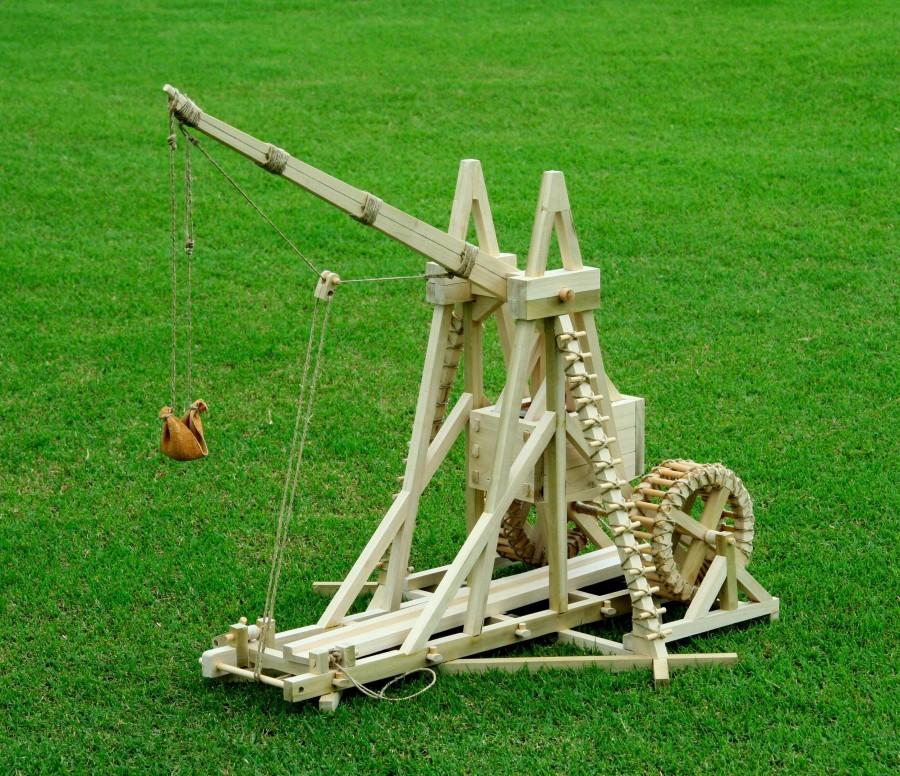
The stones it hurled were sent to demolish city/castle walls. The Trebuchet was designed for maximum force. The Onager is a type of Mangonel, recieving it's name from Latin word "onagros" meaning wild ass, as the motion and power of the Onager mimicked the kick of the wild ass. The Mangonel was capable of firing 1,300 ft. The Mangonel was easy to construct and wheels were added to the design to increase mobility. When released the Mangonel's arm would return to its equilibrium position, when it came in contact with the beam (or block) the arm would stop but the missiles stored in the bucket would continue to launch toward the enemy. The Mangonel fired projectiles in an overhead arc, the angle of the path of the projectile could be determined by a block placed on the beam that stopped the Mangonel's arm by using a block that stopped the arm earlier than 90 o angle would result in a path angle (above the horizontal) equal to the the angle between the arm and the 90 o angle. The arm is then pulled back (from natural 90 o angle) then energy was stored in the tension of the rope and the arm. The Mangonel consists of a long wood arm with a bucket (early models used a sling) with a rope attached to the end. The Mangonel was invented by the Romans in 400 BC. From the Latin word "manganon" meaning engine of war. The Mangonel is what many people think of when they think of a catapult.

Catapults were used extensively throughout Europe (predominantly by the French) until 885-886 AD when new defense systems rendered catapults ineffective. Bodies of the diseased were hurled over the city walls to infect the residing citizens. The first accounted acts of Biological Warfare involved catapults. Catapults were also used to throw missiles at soldiers. These missiles were either launched directly at the wall to cause maximum damage to the fortifications or were launched over the wall to lay siege on the population within the protective walls. Catapults were used to launch missiles (many different objects were utilized). With war prevalent throughout Europe during the Middle Ages the popularity of fortified castle and city wall rose significantly. Catapults made their exhibition in England in 1216 during the Siege of Dover, the French crossed the Channel and were the first to use Catapults on English soil. Diodorus Siculus, a Greek historian, was the first to document the use of a mechanical arrow firing catapult (early Ballista) in 399 BC. Catapults as we think of them were introduced to Europe during the Middle Ages.

The first catapults were early attempts to increase the range and power of a crossbow. Various types of Catapults have been used by the Greeks, Romans, and Chinese. Though ancient Catapults were one of the most effective weapons in siege warfare.

Catapults have been integral to siege warfare since antiquity.


 0 kommentar(er)
0 kommentar(er)
